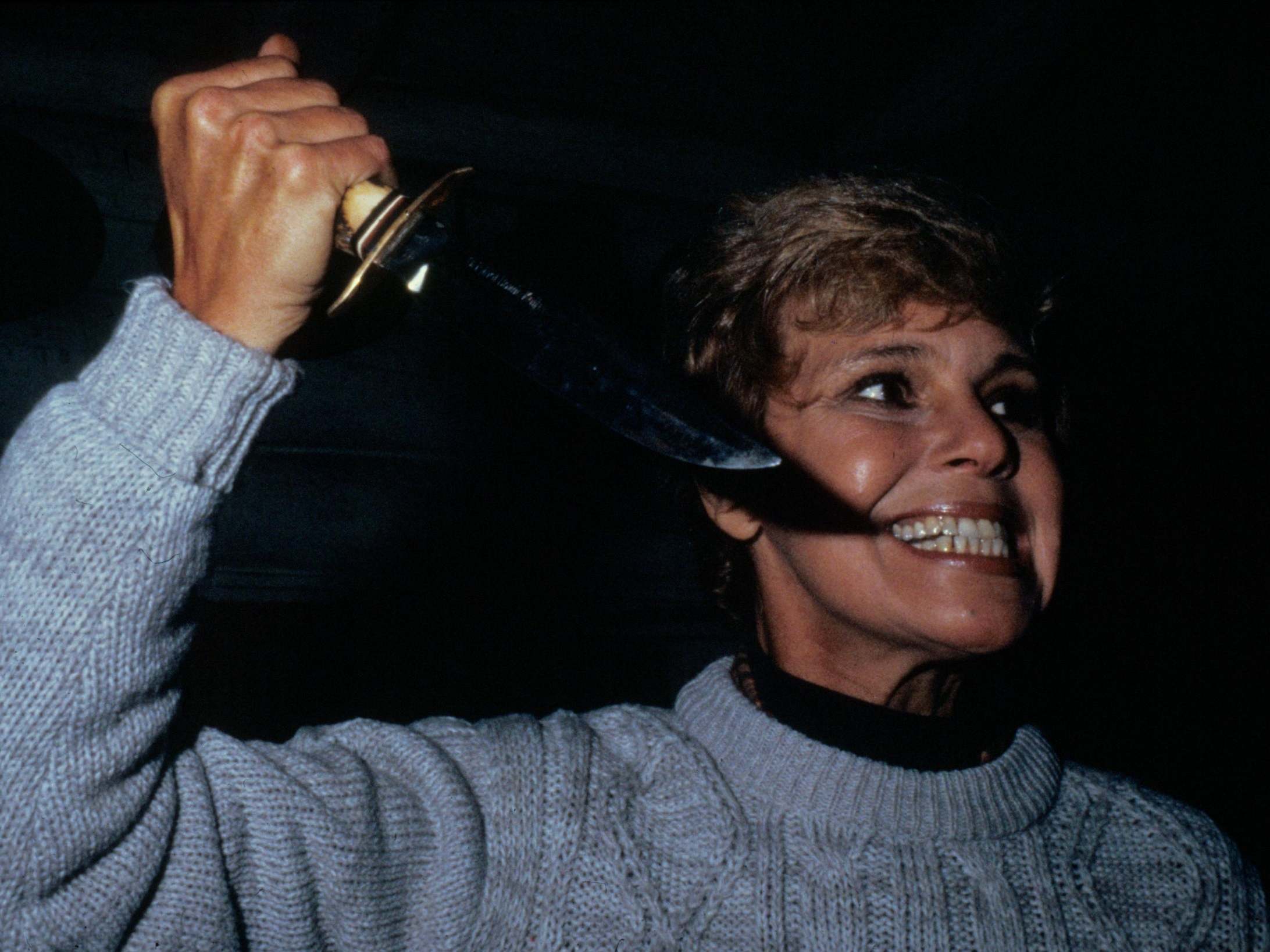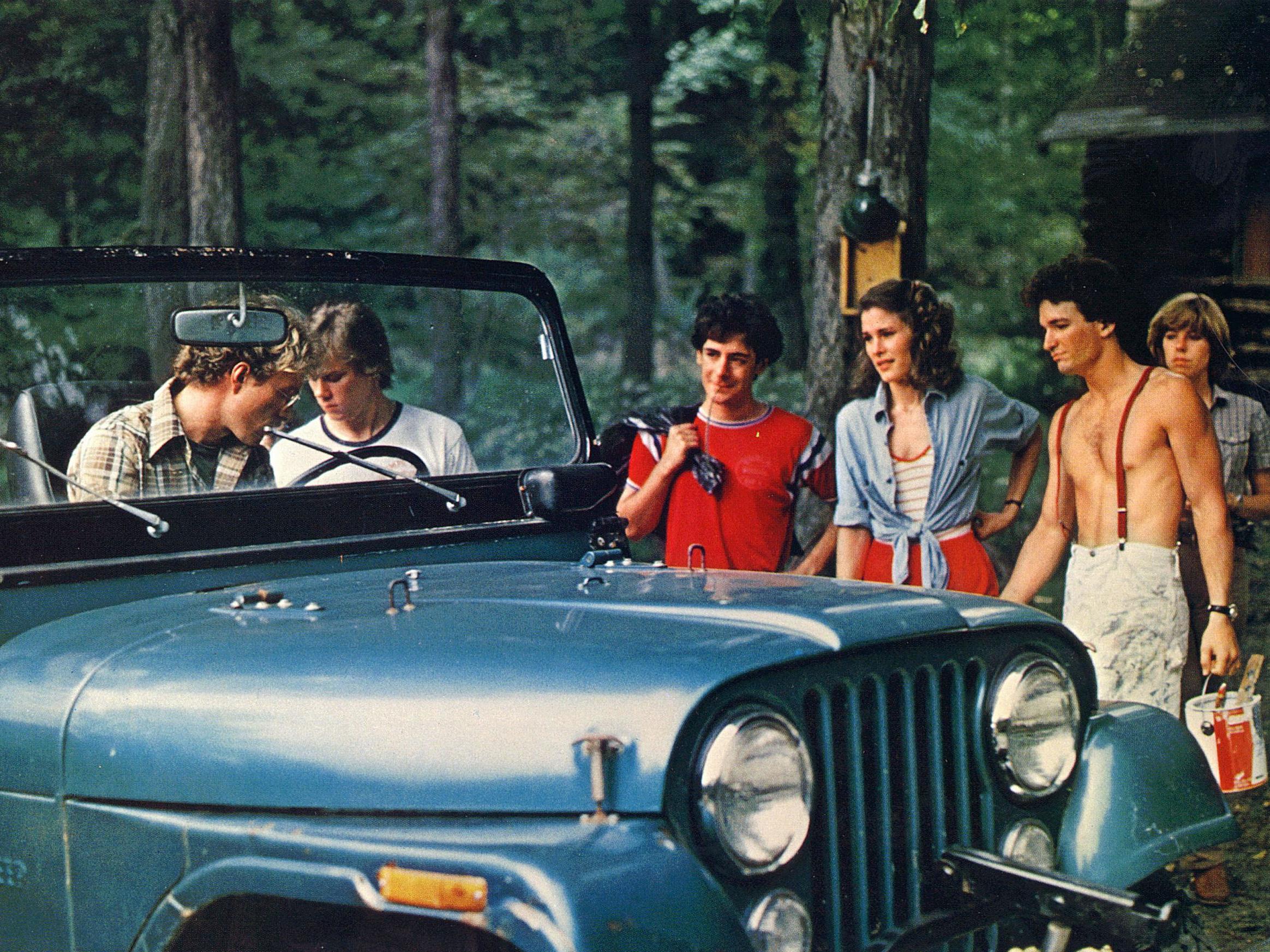‘Kill her, Mommy!’ – How Friday the 13th failed its most subversive villain
Mrs Vorhees was the only radical element of a long-suffering franchise, writes Clarisse Loughrey. But ‘bad mothers’ must always be dealt with – either through reformation or destruction


We should cut Casey, Drew Barrymore’s terrorised high school student in Scream, a little slack. When a creepy voice on the phone demands that she “name the killer in Friday the 13th” or watch her jock boyfriend get sliced up, she goes for the obvious. It’s Jason Voorhees, with his hockey mask and rusty machete. Casey’s watched him slaughter teens on the banks of Crystal Lake “20 goddamn times”. The voice snaps back: “Then you should know Jason’s mother, Mrs Voorhees, was the original killer! Jason didn’t show up until the sequel.” Her faux pas results in brutal, bloody annihilation.
But why would Casey remember Betsy Palmer’s Mrs Voorhees, in her pastel-blue knit and sensible footwear, when her progeny’s done everything possible to upstage her? Sure, she might have killed a few campers, but since the first film was released 40 years ago, Jason’s risen from the grave (several times), battled a low-rent version of Carrie, and even taken a day trip to Manhattan. After Scream’s release in 1996, he went on to visit outer space and take swipes at Freddy Krueger.
It’s an odd chapter in horror history. A whole franchise – with 10 sequels, a 2009 reboot, video games, and comics – was birthed entirely out of director Sean S Cunningham’s desire to cash in on Halloween’s 1978 box office success. He simply took what he liked most about John Carpenter’s film and, with the help of screenwriter Victor Miller, cranked up the heat on all the lust, blood, and terror. The promiscuous are sacrificed, but prudish tomboy Alice (Adrienne King) survives. The villain’s backstory positions them as some kind of vengeful spirit, unleashed on the transgressive youth of Reagan’s America. Each kill is more lurid than the last. Friday the 13th didn’t invent these tropes, but it replicated them so religiously that they felt set in stone.
Though critics decried it as shameless (the Chicago Tribune’s Gene Siskel was so desperate to ward people off that he spoilt the entire third act in his review), Cunningham’s scheme paid off handsomely. On a budget of less than $1m, the film grossed nearly $40m in North America alone. A sequel became inevitable. But producer Phil Scuderi insisted that Jason Voorhees take centre stage, despite the fact that he only appears in the film’s last moments – as a corpse who leaps out of Crystal Lake like a shark and drags Alice down into the depths, leaving the audience to wonder whether it’s a dream or reality. In truth, make-up designer Tom Savini had just seen Carrie and reckoned they should pinch its shock finale.
Scuderi had managed to erase the one radical element of Friday the 13th. Most of the film’s runtime is spent with a faceless, merciless killer. It’s an unseen hand that shoves an arrow through a young Kevin Bacon’s neck or twitches the curtains in the girl’s changing rooms. When Alice sees a jeep driving into the camp, she’s convinced that rescue has finally arrived. An older woman gets out. With her short, neat perm and the soft rhythms of her voice, Mrs Voorhees is a perfect picture of motherhood. But slowly, her demeanour changes. She tells the story of a young boy who drowned in the lake years ago. The counsellors on duty were too busy necking to pay attention. That boy, Jason, was her son. First, she grows frantic. Then she turns murderous. In a squeaky voice, she repeats the words: “Kill her, Mommy! Kill her! Don’t let her get away, Mommy!” In the dark, all we can see are the whites of her eyes – now bulging – and large, straight teeth glimmering like knives. An ordinary woman transformed before our eyes is far more frightful than an undead, hulking ghoul.
It was Mrs Voorhees who killed Alice’s friends. She murdered two counsellors the year after Jason’s death, in some fit of misplaced blame. She poisoned the water and set fires to ensure the camp didn’t re-open until 17 years later. After a vicious struggle, Alice is ultimately triumphant. She chops off Mrs Voorhees’s head in one clean sweep. It’s a brilliant, provocative twist. As film scholar Carol J Clover points out in her book Men, Women, and Chainsaws, Friday the 13th often shows events through the killer’s viewpoint, allowing us to step into their uncompassionate shoes. She writes: “We are invited, by conventional expectation … to suppose that ‘we’ are male, but ‘we’ are revealed, at the film’s end, as a woman.”
But Mrs Voorhees’ legacy is now little more than an echo, captured in the theme’s repeated refrain of “ki-ki-ki-ki Ma-ma-ma-ma” – truncated versions of the words “kill” and “mommy”. In Friday the 13th Part 2, she’s just a head on a table. Characters will occasionally pose as her to try and manipulate Jason. Friday the 13th Part III echoes the original’s ending and has her leap out of Crystal Lake to ensnare its Final Girl. But that, too, is a hallucination. Even in the 2009 reboot, she’s offed within the first two minutes. Jason can resurrect himself as many times as he likes, but Mrs Voorhees never gets her grand return. She’s decapitated like an all-American Medusa and then left to function like another Norma Bates, the maternal muse. It feels like a waste.
If Texas Chainsaw Massacre’s (1974) Sally Hardesty helped establish the Final Girl, Mrs Voorhees challenged the entire concept that women could only exist as victims. It’s still rare to see a slasher film with a single, female killer at its centre – Scream 4 (2011) and Ryan Murphy’s Scream Queens (2015-16) get to advertise themselves as novel outliers. Scream 2 (1999), meanwhile, paid direct homage to Friday the 13th when it revealed that Billy Loomis’s mother (Laurie Metcalf) was behind the second spate of killings. But, in our world, it’s hardly an urban legend. Researchers have estimated that around one in six serial murderers is a woman. Outside of Aileen Wuornos and Lizzie Borden, they’re largely overlooked because of an underlying assumption that women simply don’t have the physical or social capacity to kill. And so horror, when it does tackle the female killer, is often at pains to detail her motivations and then obliterate her from existence. The female slasher villain never gets to thrive in her own exhaustive franchise.

Jason is driven by some vague desire to avenge his mother, but the threat he presents is overwhelmingly cold and mindless. Mrs Voorhees, in comparison, is a sickly knot of emotions. She kills the counsellors because, in her delusion, she still blames them for Jason’s death and because she’d do anything to keep the camp closed so no else has to suffer his fate. Her rage is laced with a vain hope that the blood-letting will alleviate her trauma. The audience knows little about her, outside of any expanded narratives in the books or comics. But it’s not hard to imagine that she’s suffered before. There’s a class ring on her finger, which Palmer used to create a backstory for her character: she had Jason when she was in high school, but was disowned by her parents. So she projects her own troubles onto the fornicating teens of Camp Crystal Lake.
The story here is less about evil incarnate, but corruption. The idea of the female killer is so incomprehensible that cinema forces her to transform into something supernatural and monstrous. And often, like Mrs Voorhees, this change is triggered by the trials of motherhood. Think of the mothers in Hereditary (2018), The Others (2001), The Babadook (2014), or Mama (2013). They are beset by madness and tragedy. Society has deemed them perversions of the natural order, all because they failed to uphold their sacrosanct duty as life-giver and caregiver. Mrs Voorhees’s wrath is that of a woman driven to the brink by a guilt that shouldn’t even be hers to bear. But “bad mothers” must always be dealt with – either through reformation or destruction.
And so, off with her head. Her son steps up to the plate. But we, as an audience, lose one of horror’s most unexpected and subversive villains. As Friday the 13th’s screenwriter once said: “Mrs Vorhees was the mother I’d always wanted – a mother who would have killed for her kids.”
Join our commenting forum
Join thought-provoking conversations, follow other Independent readers and see their replies
Comments